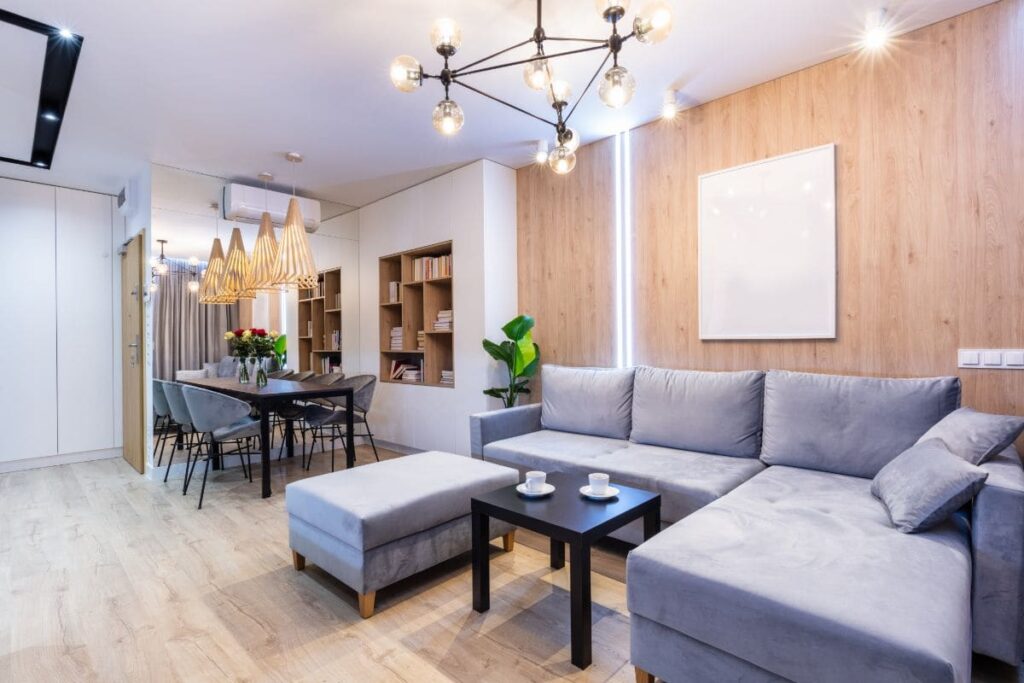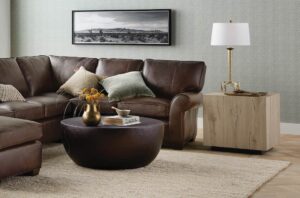Choosing between Castlery vs West Elm is much like deciding on a culinary delicacy; both have their unique flavors, but which will satisfy your taste?
The furniture world has seen a revolution, and Castlery and West Elm have positioned themselves as top contenders. If furniture was a language, these two would be its most eloquent speakers, bringing style and quality to the discourse.
Before making a choice, let’s delve into what each brand represents and why they’ve captured the hearts of many homeowners.
Breaking Down the Price Tags
Money often plays a significant role when it comes to making purchasing decisions. So, understanding the price range of these two furniture giants, Castlery vs West Elm, can greatly influence our choices.
Let’s dissect the price tags and understand what your wallet is up against when opting for one brand over the other.
How much does a Castlery sofa cost?
Castlery offers a versatile range of sofas, and their prices reflect this diversity. Here’s a breakdown:
- Basic sofa models start at a modest $639.
- Premium range sofas can go up to a high of $4,699.
This spectrum provides options for various budgets, ensuring that most customers can find something that fits their financial comfort zone.
What’s the price for West Elm chairs?
West Elm’s chair collection showcases both elegance and sophistication. The price tag associated with these chairs is as follows:
- The upper limit for a West Elm chair is a staggering $5,596.
Note: It’s essential to understand that the higher price point often correlates with specialized designs or limited edition models.
Beds from Castlery vs West Elm
Beds, being the centerpiece of our bedrooms, require special attention to both design and cost. Here’s a comparison:
- Castlery offers beds priced between $899 and $1,099.
- West Elm, on the other hand, sets the upper bar at $4,074 for their beds.
To summarize this section, while both brands offer products across various price ranges, West Elm generally positions itself at a higher price point compared to Castlery. As consumers, weighing the price against the value, brand reputation, and product quality is vital before making a purchase.
Read Also: Thomasville vs KraftMaid – A Comprehensive Comparison
Are They Built to Last?
Longevity and durability are paramount when investing in furniture. Nobody wants a piece that looks great today but wears out in a few months. So, how do Castlery vs West Elm measure up in terms of build quality?
Let’s sift through the details and find out if these brands are genuinely built to stand the test of time.
The craftsmanship behind Castlery pieces
Castlery places a significant emphasis on the quality of their furniture. Several factors stand out:
- Their sofas are known for their top-notch fabrics which are not just aesthetically pleasing but durable too.
- The wooden frames used are sturdy, ensuring a longer lifespan for the furniture.
- The overall design approach leans towards functionality without compromising on style.
How West Elm ensures lasting quality
West Elm’s reputation in the furniture market isn’t just about looks; it’s rooted in quality. Here’s what they offer:
- A focus on modern designs that incorporate robust and long-lasting materials.
- Emphasis on sustainability, which often translates to products that are designed to last, utilizing eco-friendly materials like FSC-certified wood, organic cotton, and recycled materials.
- A significant portion of their furniture (35%) uses wood that’s FSC certified, which not only ensures environmental responsibility but often denotes high quality.
Where are these furniture pieces made?
Understanding the origin can often provide insights into the quality and craftsmanship of products.
- Most of Castlery’s products trace their origins back to factories in China and South-East Asia.
- West Elm, though specific details aren’t provided, sources its products from various global locations, partnering with both local and international artisans.
Quality furniture isn’t just about aesthetics; it’s an amalgamation of materials, craftsmanship, and origin. Both Castlery vs West Elm seem to tick these boxes, making them worthy contenders for your next purchase.
What Are Customers Saying?
Feedback from customers provides invaluable insights when selecting between brands. Authentic reviews unveil the true performance of products and help future buyers make informed decisions. With Castlery vs West Elm, we have a wealth of customer experiences to explore.
So, let’s dig into the collective voice of their clientele and determine which brand might emerge as the frontrunner.
The good stuff about Castlery
Customers often appreciate the following aspects of Castlery:
- Comfort and Quality: Many users highlight the exceptional comfort and robust quality of Castlery furniture.
- Design: The modern aesthetics of their products resonate well with a contemporary audience.
- Price Point: Despite the high quality, many find Castlery’s pricing to be competitive, offering good value for money.
Common challenges with Castlery orders
However, no brand is without its challenges, and Castlery is no exception:
- Customer Service: A noticeable number of customers have expressed concerns regarding the brand’s customer service responsiveness.
- Shipping Delays: Some users faced longer-than-expected delivery times, affecting the overall buying experience.
Note: While these issues are worth noting, they don’t necessarily reflect the experience of every Castlery customer.
Why do people like West Elm?
West Elm, with its vast market presence, has garnered a mix of feedback. Here’s what stands out positively:
- Quality: The general consensus is that West Elm furniture tends to be of reliable quality.
- Sustainability: Their emphasis on eco-friendliness and sustainable products earns them brownie points among environmentally conscious consumers.
- Modern Designs: Many customers are drawn to West Elm’s contemporary designs, which easily blend with varied interior settings.
Hearing directly from those who’ve made purchases offers a genuine perspective. While both brands have their strong points, understanding individual priorities will guide the final choice.
Getting Your Furniture Home
The anticipation of waiting for your newly purchased furniture to arrive can be both exhilarating and nerve-wracking. Both Castlery vs West Elm promise to transform your living spaces, but how do they fare when it comes to getting that stylish piece to your doorstep?
Let’s delve into the shipping procedures and delivery times of these brands to see which one might give you a smoother experience.
Castlery’s shipping options and wait times
Castlery strives to make their delivery process as efficient as possible, offering:
- Diverse Delivery Services: Customers can choose from three types: Standard, Room of Choice, and White Glove.
- Free Shipping Offer: All orders that only include bedding enjoy free shipping, though conditions apply.
- Average Wait: The estimated delivery date can vary, but on average, Castlery promises a timeline of 2-4 weeks.
West Elm’s approach to deliveries
West Elm, aiming to cater to a broader audience, provides:
- Varied Shipping Options: Their shipping methods depend largely on product type and destination.
- Comprehensive Guidance: Products are accompanied by thorough assembly instructions, with a White Glove Service that includes both delivery and assembly.
Note: As with all brands, delivery times can be influenced by product availability and specific location.
Which brand delivers faster?
Determining which brand is quicker in terms of delivery can be subjective as it often depends on various factors, including the product ordered, its availability, and the delivery location. However:
- Castlery: Typically sticks to a 2-4 week window for most products.
- West Elm: Delivery times can vary widely based on the product and its availability.
In essence, while both brands put forth effort to streamline their delivery processes, individual experiences might vary. It’s always recommended to check specific delivery timelines and conditions before finalizing a purchase.
Handling Returns and Guarantees
A significant part of any purchase decision, especially when it comes to furniture, is understanding the return policies and warranties. It’s essential to know that if things don’t go as planned, there’s a safety net in place. Castlery vs West Elm, as industry leaders, have policies in place to ensure customer confidence.
Let’s uncover what these brands offer in terms of returns and guarantees.
Making a return to Castlery
Returning a product can sometimes be daunting, but Castlery aims to make the process relatively painless:
- Return Window: Customers have a 14-day window to make any returns.
- Restocking Fee: There’s a 20% restocking fee applied. Additionally, if items aren’t returned in their original packaging, a $50 repackaging fee is levied.
Warranty coverage from Castlery
Warranties can be the silver lining when unexpected issues arise post-purchase. Castlery’s warranty structure is as follows:
- General Warranty: A 1-year warranty covers most items.
- Sofa Specifics: Sofa frames enjoy a 3-year limited warranty. In contrast, foams, fillings, and covers have a separate 1-year warranty.
How does West Elm ensure customer satisfaction?
West Elm places a high value on customer satisfaction, and their policies reflect this commitment:
- Return Policy: While specific details aren’t provided, West Elm typically offers a generous return policy, understanding that sometimes, a product might not be the right fit.
- Diverse Product Range: Offering a wide range of contemporary home decor and furnishings ensures that customers have ample choices.
- Sustainability Focus: Their emphasis on sustainable and environmentally friendly practices resonates with many customers, adding to overall satisfaction.
It’s evident that both brands prioritize customer contentment, be it through fair return policies or comprehensive warranties. As always, potential buyers should closely review these policies to ensure they’re making an informed decision.
Diving into Brand Stories
Behind every successful brand is a tale of passion, challenges, and growth. Castlery vs West Elm are no exceptions. Each brand boasts a rich history filled with milestones and narratives that have shaped their identities. Understanding these stories offers a more profound connection to the products and the ethos of each brand. Let’s embark on a brief historical tour.
The birth and growth of Castlery
Established in 2013 by Declan Lee, Castlery emerged as a modern home furniture retailer, aiming to revolutionize the industry. Their objective was clear: bring stylish, high-quality products to every home. Over the years, the brand has expanded its reach, offering unique designs tailored for various living spaces. Castlery’s commitment to value and design has propelled it to be a recognized name in the furniture domain.
West Elm’s journey since 2002
West Elm is not just a furniture brand; it’s an experience. Launched under the renowned umbrella of Williams-Sonoma and Pottery Barn, the brand carved a niche with its modern designs from the get-go. From its inception in 2002, West Elm’s focus on sustainability set it apart. Today, 60% of their products support at least one eco-friendly initiative, with 35% of their wood furniture being FSC certified. Their commitment to the environment, coupled with contemporary aesthetics, has solidified their position as industry leaders.
Who’s winning on social media?
In today’s digital age, a brand’s social media presence speaks volumes.
- Castlery: Boasts over 175K followers on Facebook and more than 117K on Instagram. Their engaging content has also led to features in prominent publications like Apartment Therapy and Architectural Digest.
- West Elm: Specific numbers aside, West Elm’s social media channels are abuzz with activity, showcasing their latest designs and connecting with a vast community of home decor enthusiasts.
The essence of these brands extends beyond their products. Their stories, values, and digital presence contribute to shaping consumer perceptions and preferences. Whether you resonate with Castlery’s innovative approach or West Elm’s sustainable mission, there’s no denying that both brands have left indelible marks in the world of furniture.
Why Choose One Over the Other?
In a market saturated with options, picking a furniture brand can be akin to selecting the right life partner – it requires thought, research, and a keen understanding of your needs. Both Castlery vs West Elm bring unique offerings to the table, compelling us to weigh the benefits and strengths of each. Let’s dissect the standout features of these brands, helping you make a more informed decision.
Castlery’s standout services
Castlery isn’t just about furniture; it’s about the entire experience. Here’s what they offer:
- Free Shipping: For orders over $999, Castlery waives the shipping fees, making it more pocket-friendly.
- Diverse Range: Their collection is vast, catering to different tastes and preferences.
- Helpful Delivery Staff: The delivery process is further enhanced by their accommodating staff, ensuring your furniture arrives safely.
How West Elm champions sustainability
West Elm’s commitment to the environment is palpable in their operations:
- Eco-friendly Products: A significant 60% of their offerings back at least one sustainability initiative.
- Wood Certification: Their adherence to quality is evident with 35% of wood furniture being FSC certified.
- Global Partnerships: Collaborations with artisans worldwide underline their commitment to sustainability and unique designs.
Note: Sustainability isn’t just about eco-friendliness; it’s about long-term furniture solutions, and West Elm seems to understand that.
Design perks from each brand
Design is at the heart of any furniture piece, and both brands shine in this department:
- Castlery: Their modern furniture pieces, especially the sofas, are crafted with attention to detail, ensuring both aesthetics and comfort.
- West Elm: Their designs emphasize clean lines, bold colors, and unique textures, catering to those who lean towards contemporary home decor.
Making a choice between Castlery vs West Elm boils down to individual preferences. Whether you prioritize sustainability, design, or overall service, both brands have proven their worth in the industry. Your ideal pick would hinge on what you value most in your furniture shopping journey.
Read Also: Castlery vs Burrow? Making the Right Furniture Decision
Conclusion
As we’ve journeyed through the intricacies of Castlery vs West Elm, it’s clear both brands bring distinct value to the furniture market. Castlery shines with its pricing and diverse range, while West Elm stands out with its sustainability initiatives and design prowess.
But what should potential buyers consider? Beyond aesthetics and price, think about durability, customer service, and the brand ethos. As for the ultimate furniture crown, the choice is subjective. However, armed with this knowledge, you’re better poised to make a decision tailored to your needs.





